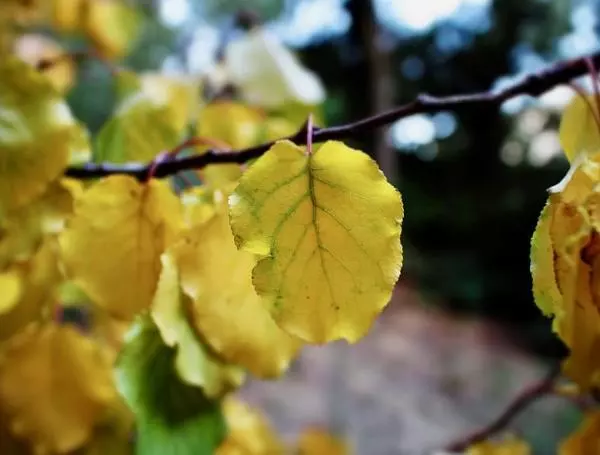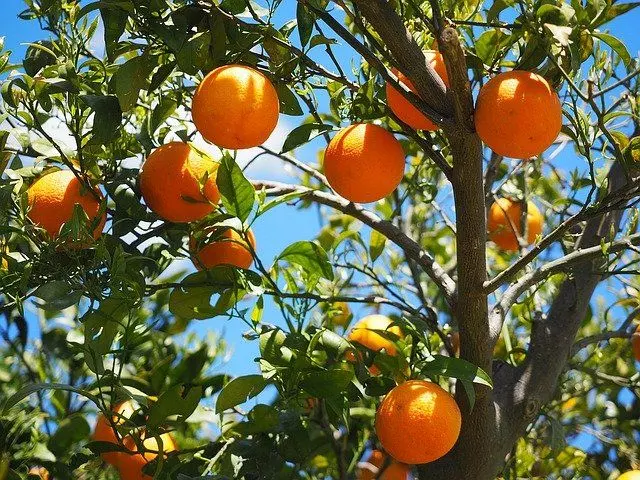Iron chlorosis or iron deficiency is one of the main nutritional deficiencies of crops and one of the most notorious. It is characterized by an alteration of leaf color (leaf yellowing) because its metabolism and chlorophyll synthesis are affected. Learn all about iron deficiency in plants.
And, we know that there are other deficiencies that manifest very similar changes. For this reason, it is necessary to delve into the basic characteristics of this particular deficiency.
Table of Contents
Symptoms of Iron Deficiency in Plants
The initial symptoms of iron deficiency in plants will appear on young leaves, showing a significant loss of intensity in their coloration. The green color will gradually change to yellow throughout the leaf blade, with the exception of the nerves, which will remain green.
In addition, it is often arbitrary, i.e., it may be present in some branches and not in others.
These signs, so common to this nutritional deficiency, are key to differentiate it from other micronutrients deficiency.
We can see it better with this example: If there is a nitrogen deficiency, chlorosis would be observed throughout the leaf (including its vascular bundles). In addition to this, it is common that it manifests itself first in old leaves. Roots will present a brown color and characteristic odor, as a result of the secretion of phenolic compounds.
If any symptom resembles it, it is magnesium and manganese deficiency.
How do they differ? In the case of magnesium, as with nitrogen, the symptoms will show earlier in the old leaves.
In the case of manganese, there can be certain drawbacks when discerning nutritional deficiency.
Like iron, manganese deficiency shows symptoms on young leaves turning yellow between the nerves, which remain green. You can differentiate them because in the case of manganese a green halo appears around the nerves and if high deficiencies occur, they will begin to turn yellow. It is also accompanied by necrotic spots on the leaves.

What Causes Iron Deficiency in Plants
The reasons that can lead a crop to present a deficiency are varied. They can have their origin in the soil, in the environment, or even in the characteristics of the plant or tree itself.
Iron chlorosis can occur because the soil pH is too alkaline and although there is an abundance of iron, due to its lack of solubility, the plant cannot absorb it.
Also, sometimes, chlorotic plants may have an abundance of iron in their roots, but as it has little power of mobilization and translocation in the plant, it does not get access to the leaves.
This lack of iron absorption can also be caused by a soil pH that is too high, or by an excess of carbonates that inhibits plant response.
Plants have difficulty absorbing iron when soils have high levels of heavy metals such as nickel, chromium, cobalt, zinc, copper, or magnesium.
Other reasons that prevent iron absorption are soils that are too clayey or waterlogged.
And at this point where you confirm that it is an iron deficiency, how can you solve it? We see it below.
How to Treat Iron Deficiency in Plants
Among the most common solutions to be applied to crops, we find:
- Prevent: find out the type of soil pH and its limestone content.
- Apply by root or foliar application of iron chelates, which prevent the insolubilization of iron in the soil.
- Apply foliar applications of micronutrient fertilizers.
- For trees of a certain age: Trunk injections.
- Acidify the soil to release insolubilized iron and make it available to the roots.
- Acidify irrigation water with citric acid.
- Avoid overfertilization with zinc or manganese.
- Improve drainage and soil aeration. Avoid compaction.
- Increase root temperature.
- Analysis and improvement of the substrate.
These are, in summary, the most important points to take into account to be able to differentiate an iron deficiency, to know the causes and the most efficient solutions to solve production problems, and to prevent iron deficiencies in olive groves, citrus, and other fruit trees, cereals, vegetables and in the rest of the crops, both extensive and intensive.

